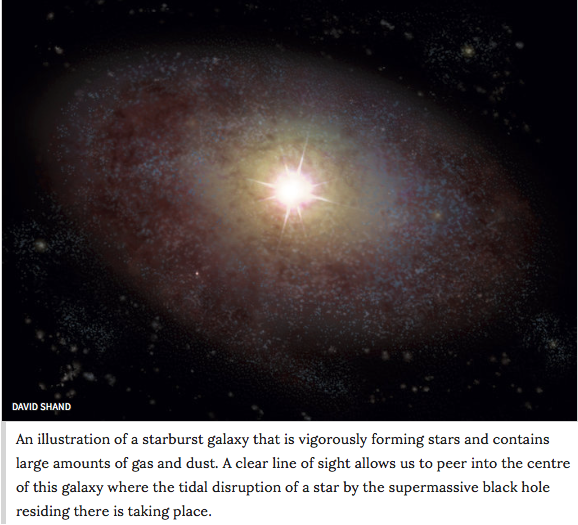
Astronomers know that a star is disrupted violently when it wanders in the vicinity of a supermassive black hole due to the enormous gravitational force of the black hole. As the stellar matter spirals in, heats up and generates a luminous flare, observable from billions of light years away. The exact physical processes that take place during a disruption event are not clearly understood nor we know the frequency, luminosity and duration of these events.
We have observed only a few disruption events; about one-tenth of what theoretical models predict. Most of these events have been detected in galaxies that their star formation has ceased (post-starburst galaxies). A recent work by Tadhunter et al. discovered a stellar disruption event in a star-forming galaxy. They suggest that although stellar disruption events are frequent in such systems we either cannot observe them because the dust and gas these galaxies contain make their centre, where supermassive black holes reside, obscured to our optical telescopes and/or because other similar events (e.g. supernovae) are very frequent in starburst galaxies and pose as stellar disruptions. The analysis of Tadhunter et al. revealed that the observed event is indeed a star consumed by a black hole.
This discovery suggests that such disruption events may be much more frequent in starburst galaxies, than we believe. Therefore, the event we observe in post-starburst regions of the universe may be only the tip of the iceberg. Missions, such as LIGO and LISA, that detect gravitational waves emitted by two merging black holes, will help us locate the main sites of stellar disruption in the local universe.
Publication: Tadhunter et al. 2017
Source: Nature Astronomy
